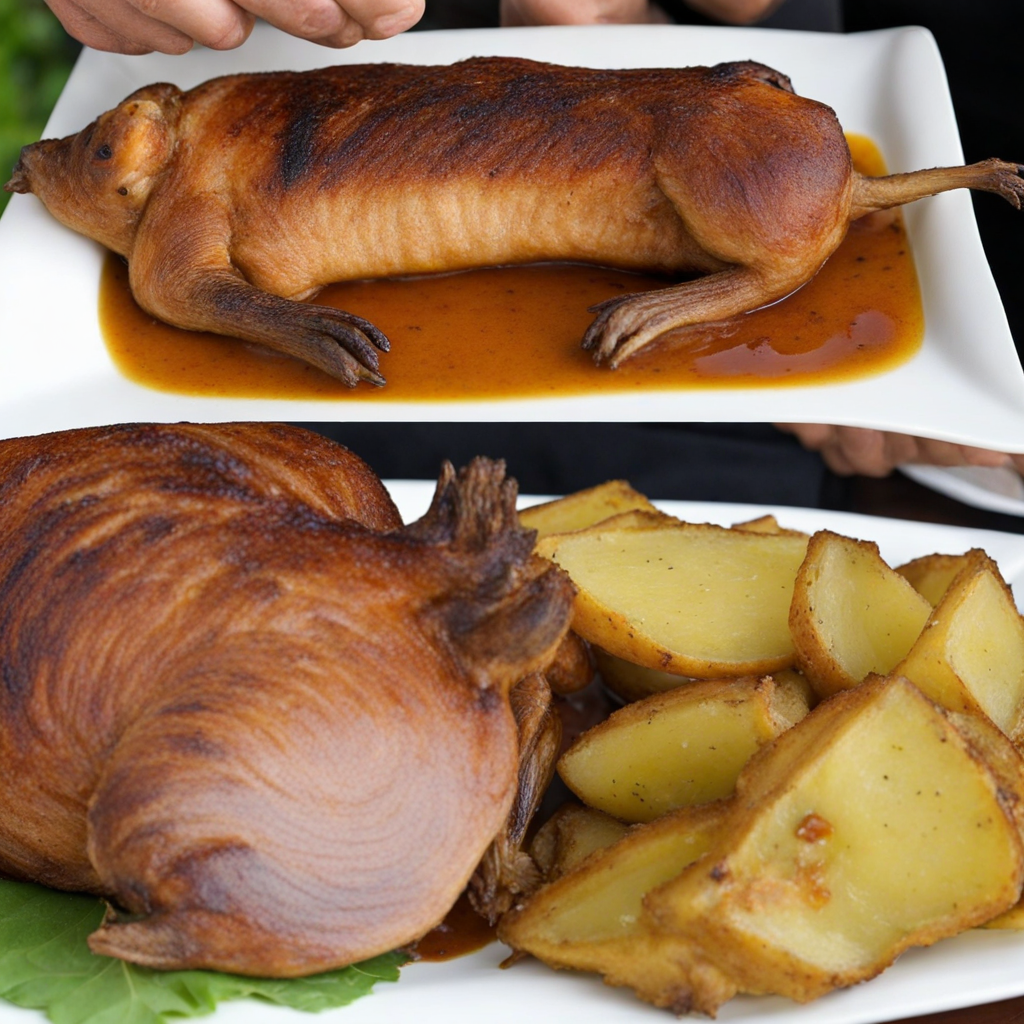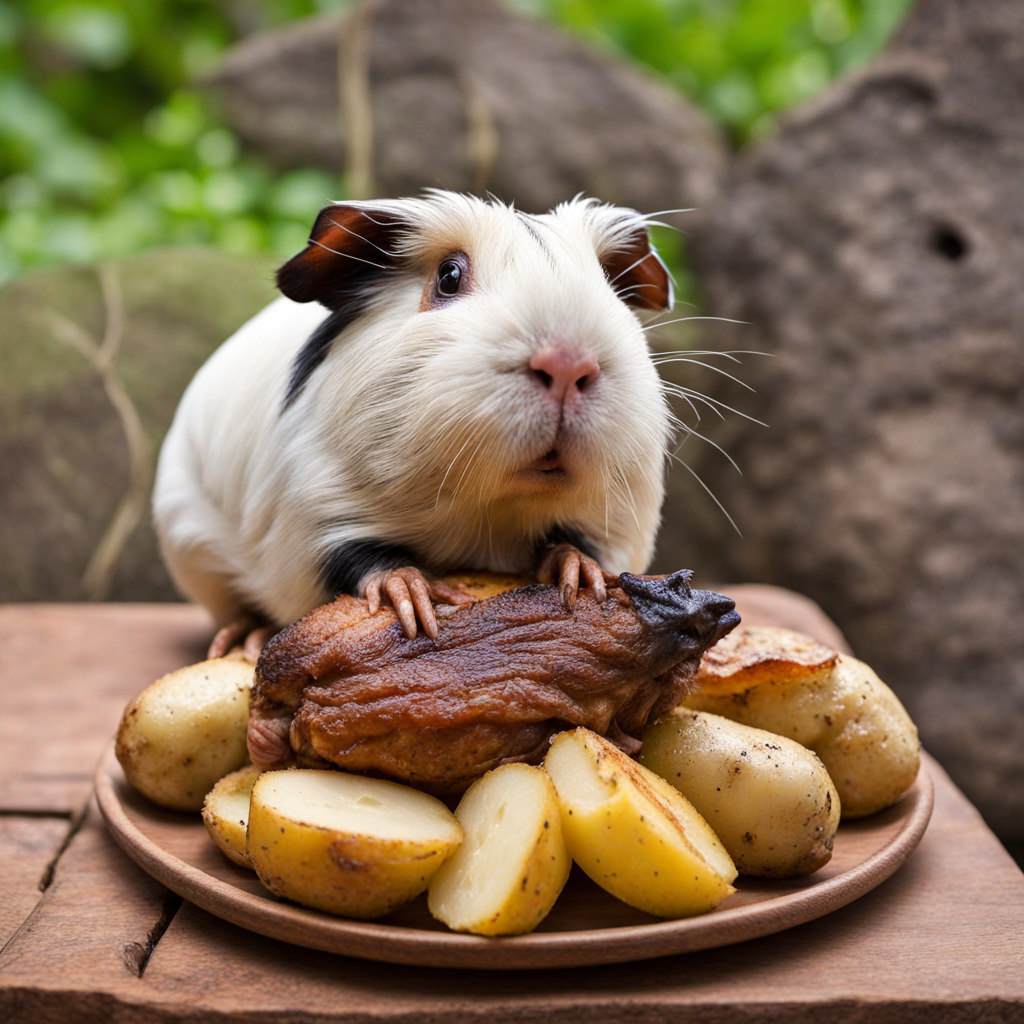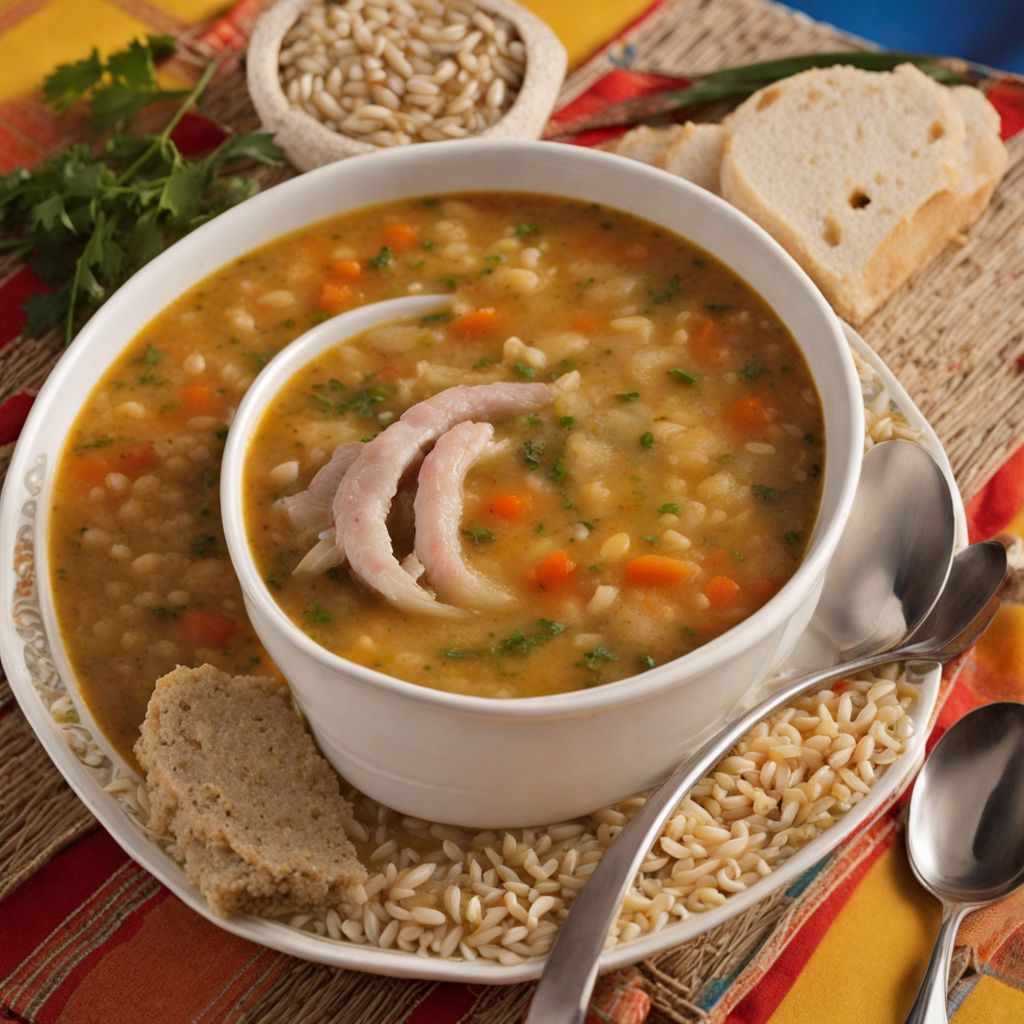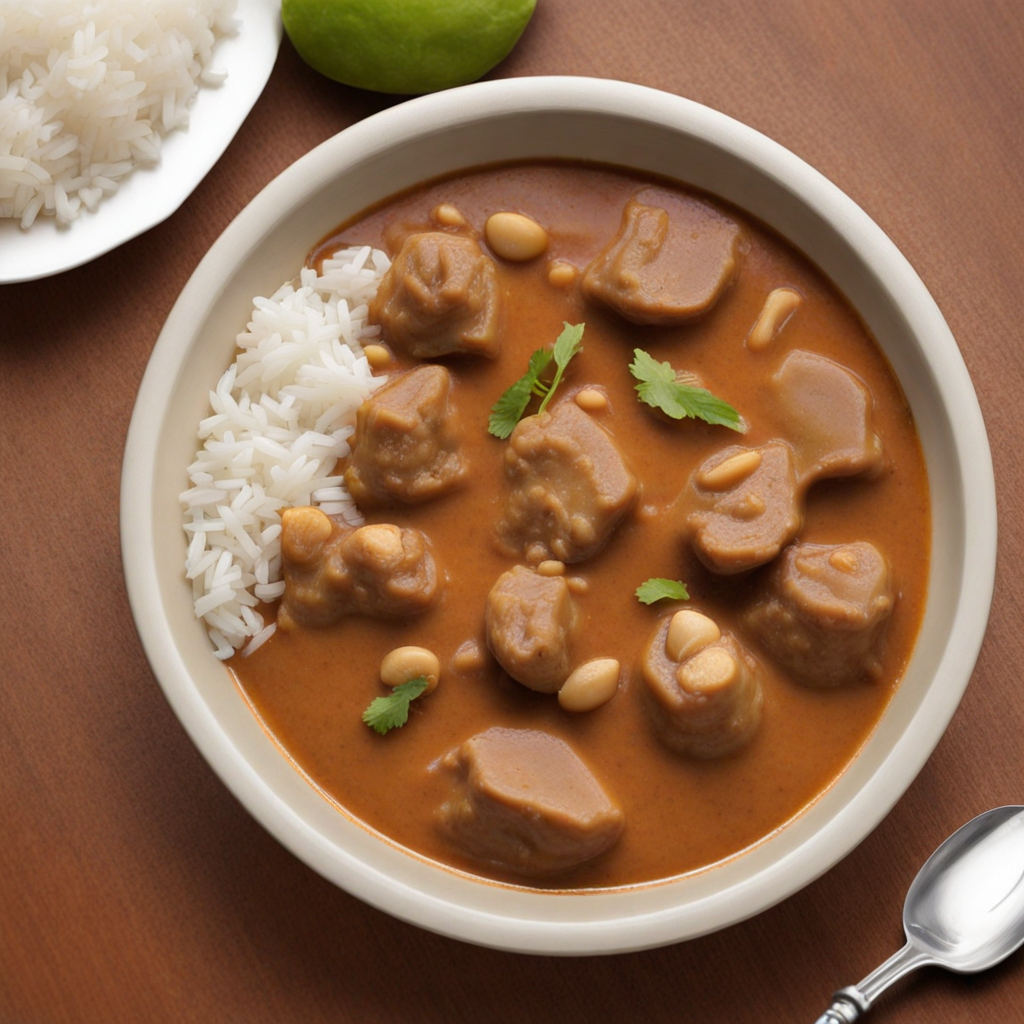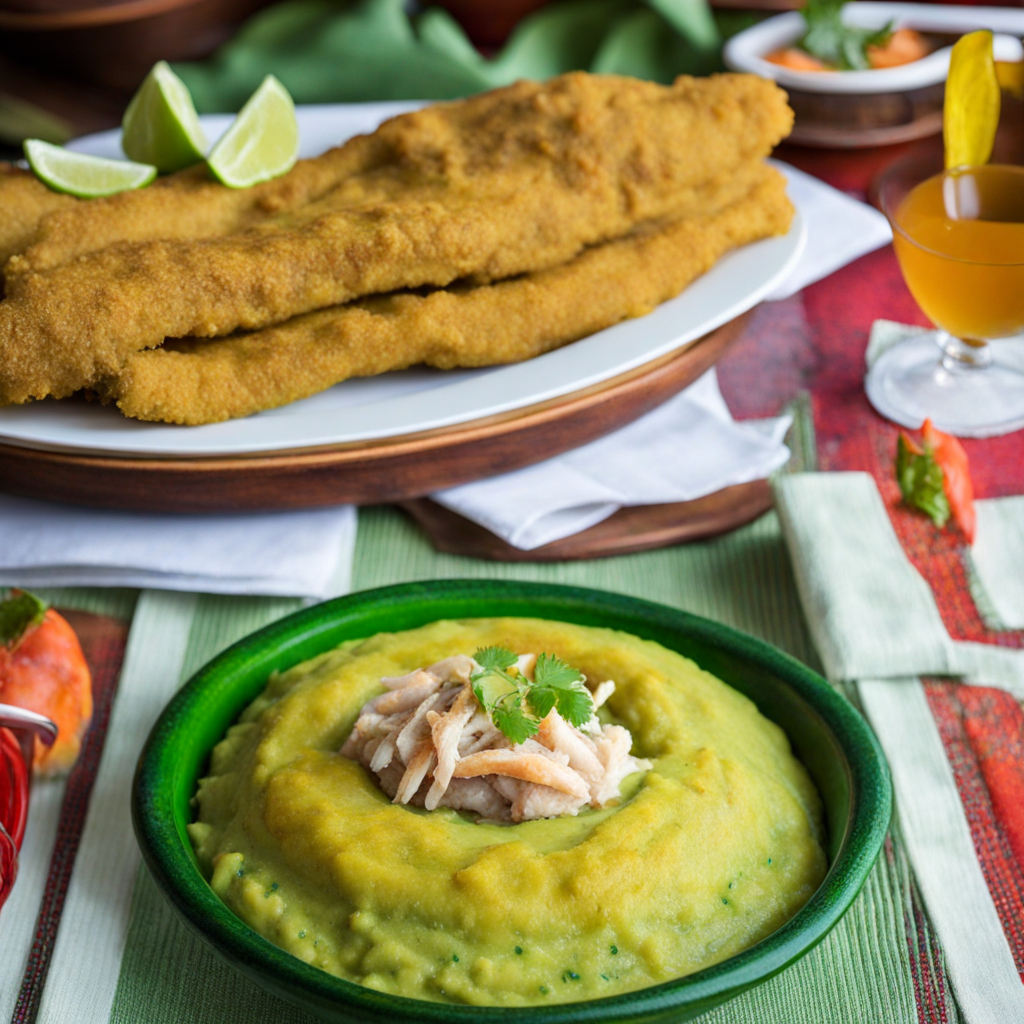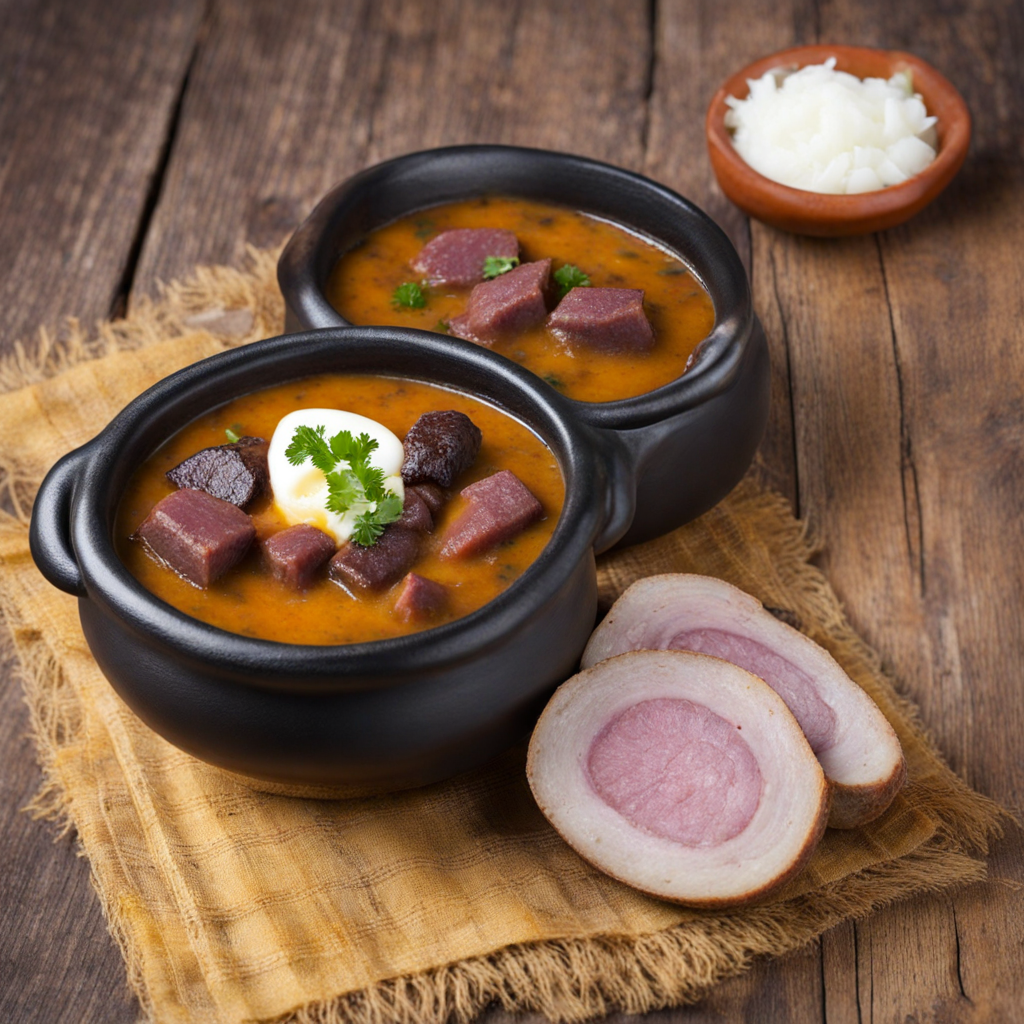Cuy
Cuy, or guinea pig, is a traditional dish in Ecuador that offers a truly unique taste experience. This small rodent has been a staple in Andean cuisine for centuries, valued for its rich flavor and tender meat. Typically roasted or fried, cuy is often served whole, showcasing its crispy skin and succulent flesh. The preparation usually involves marinating the animal in a blend of spices, which can include garlic, cumin, and achiote, enhancing its natural flavors and adding depth to each bite. When you take your first bite of cuy, you'll notice its distinct flavor, which is often compared to a cross between rabbit and dark chicken. The meat is lean yet flavorful, offering a satisfying chew that pairs beautifully with traditional Ecuadorian sides like llapingachos (potato patties) or aji (spicy salsa). The crispy skin is a highlight for many, providing a delightful crunch that contrasts with the tender meat underneath. Served with fresh vegetables and potatoes, cuy becomes a complete meal that showcases the heart of Ecuadorian culinary traditions. Enjoying cuy is not just about the taste; it's also an experience steeped in cultural significance. In many regions of Ecuador, cuy is served during special occasions and celebrations, symbolizing hospitality and community. Diners often gather around the table to share stories and laughter, making the meal a communal affair. As you venture into the world of cuy, you’re not only savoring a unique flavor but also partaking in a rich cultural heritage that celebrates the flavors of the Andes.
How It Became This Dish
The History of Cuy: Ecuador's Culinary Treasure Cuy, or guinea pig, is a traditional dish that holds a significant place in the culinary landscape of Ecuador. With roots that stretch back thousands of years, cuy is more than just a meal; it is a symbol of cultural identity and heritage for many Ecuadorians, particularly in the Andean regions. Understanding the history of cuy involves exploring its origins, cultural significance, and the ways it has evolved over time. #### Origins: A Pre-Columbian Tradition The domestication of cuy can be traced back to the ancient cultures of the Andes. Archaeological evidence suggests that guinea pigs were first domesticated around 5000 B.C. by the pre-Incan societies of Peru, although their use spread throughout the Andes, including present-day Ecuador. These small rodents were initially valued for their meat, but they also held spiritual significance; they were often used in religious rituals and ceremonies. The indigenous peoples of the Andes, including the Incas, recognized the nutritional value of cuy. In a landscape where agriculture was challenging due to altitude, cuy provided a sustainable source of protein. The small size of the animal made it easy to rear in family homes, and its rapid reproductive rate meant that it could be bred quickly to meet household needs. Cuy was not only a staple food but also a marker of social status. In some cultures, the size and number of cuy one could serve was a reflection of wealth and prestige. The animal often featured in special occasions, such as weddings, festivals, and religious ceremonies, reinforcing its importance in both daily life and ceremonial practices. #### Cultural Significance: More Than Just a Meal In Ecuador, cuy is considered a delicacy and a traditional dish that embodies the country’s rich cultural heritage. The preparation and consumption of cuy are often associated with community and family gatherings. During festivals and celebrations, it is common for families to prepare large quantities of cuy to share with guests, emphasizing themes of hospitality and community bonding. Regional variations exist in the way cuy is prepared and served. In the highlands, it is commonly roasted or fried, often served with potatoes and aji, a spicy sauce that complements the dish. In coastal regions, it may be cooked in a tomato-based sauce or grilled, reflecting the diverse culinary practices of Ecuador. The dish has also transcended its humble beginnings; in urban centers like Quito and Guayaquil, cuy has gained popularity among tourists and food enthusiasts, often featured in restaurants that emphasize traditional Andean cuisine. This shift has contributed to a growing appreciation for cuy as a culinary art form, with chefs experimenting with new flavors, techniques, and presentations. #### Development Over Time: From Tradition to Modern Cuisine As Ecuador has undergone significant social and economic changes over the centuries, so too has the role of cuy in society. In the pre-Columbian era, cuy was a staple food that was deeply integrated into the cultural fabric of Andean life. However, with the arrival of Spanish colonizers in the 16th century, the dynamics of food production and consumption began to shift. The Spanish introduced new livestock, grains, and agricultural practices, altering traditional diets. Despite these changes, cuy remained a resilient part of the indigenous diet. During the colonial period, the consumption of cuy was sometimes viewed with disdain by the Spanish, who regarded it as a food for the lower classes. However, this perception gradually shifted as cuy was embraced by different social classes, eventually becoming a cherished dish throughout Ecuador. In more recent decades, the rise of globalization has impacted how cuy is perceived and consumed. As Ecuadorians have migrated to urban areas and abroad, they have carried their culinary traditions with them. Festivals celebrating Andean culture often showcase cuy as a highlight, reinforcing its status as a cultural emblem. The growing interest in sustainable and local food practices has also revitalized cuy's popularity. In an era where ethical consumption is increasingly valued, cuy is seen as a sustainable source of protein that has minimal environmental impact compared to larger livestock species. Its small size means it requires less land and resources to raise, aligning with modern trends towards sustainability. Additionally, the rise of food tourism in Ecuador has brought cuy to the forefront of culinary experiences for international visitors. Chefs and local cooks are now presenting cuy not just as a traditional dish, but as a gourmet experience, often pairing it with local wines or craft beers to enhance the dining experience. Cooking classes focused on traditional cuy preparation have also become popular, allowing tourists to engage directly with Ecuadorian culture and cuisine. #### A Symbol of Identity Today, cuy stands as a symbol of Ecuadorian identity, embodying the resilience and adaptability of its people. It connects modern Ecuadorians to their ancestral roots while also allowing them to embrace contemporary culinary trends. The dish serves as a reminder of the rich history of the Andean region, where food is intricately linked to culture, community, and tradition. In conclusion, the history of cuy in Ecuador is a fascinating journey that spans thousands of years. From its origins as a staple food in ancient Andean societies to its current status as a gourmet dish enjoyed by locals and tourists alike, cuy is a testament to the enduring significance of culinary traditions. As Ecuador continues to evolve, so too will the role of cuy, but its place in the hearts and plates of Ecuadorians is sure to remain steadfast. Whether enjoyed during a family gathering, at a festive celebration, or in a trendy restaurant, cuy will always be more than just food; it is a vibrant expression of Ecuadorian culture and history.
You may like
Discover local flavors from Ecuador


